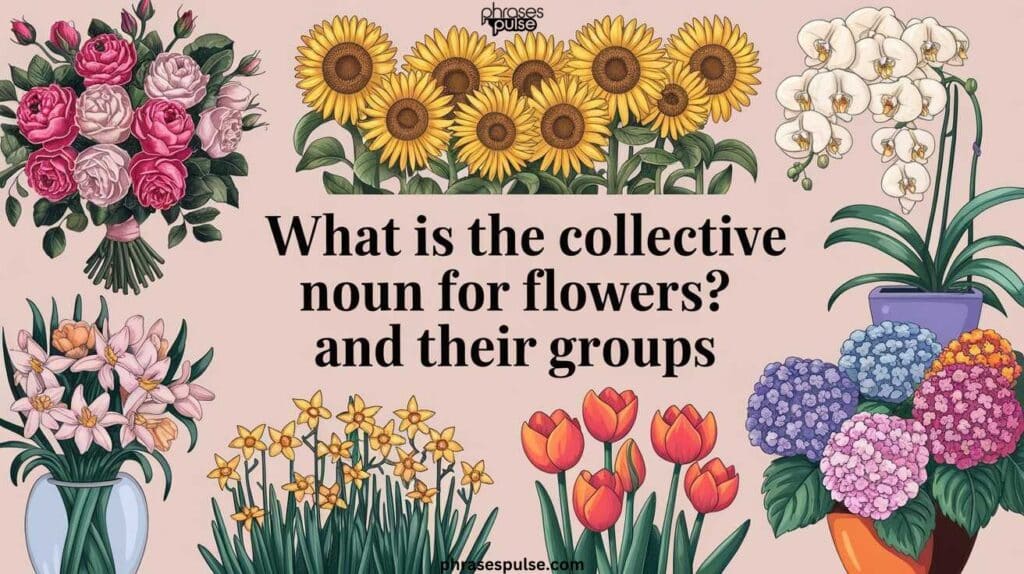Collective noun for flowers refers to the special terms used to describe various groupings of flowers, enhancing how we talk about floral arrangements. These grouping words capture the beauty and form of flowers in different settings, such as a bouquet of roses at a wedding or a bed of tulips blooming in spring. Each term adds meaning, helping us communicate clearly whether we’re talking about a cluster of blooms in a vase or a field of wildflowers swaying in the wind.
Using the right collective phrase improves how we describe nature, making our words more precise and lively. A bunch of flowers casually gifted to a friend or a flower arrangement at an event showcases the diversity of floral groupings. By learning these terms, we appreciate the vibrant world of flowers while enhancing our vocabulary and word choice.
Collective Noun for Flowers
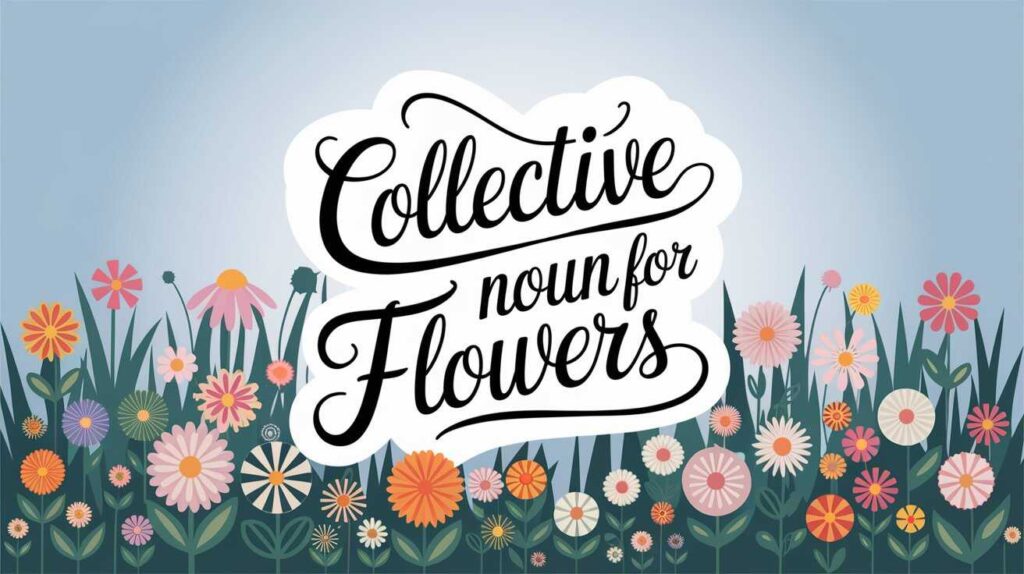
| Collective Noun | Meaning | Example |
|---|---|---|
| Bouquet | A tied arrangement of flowers, often for gifts | Bouquet of roses at a wedding |
| Bunch | A casual group of flowers | Bunch of daffodils from a garden |
| Garland | Flowers strung together for decoration | Garland of lilies for a celebration |
| Spray | Small branch with multiple flowers | Spray of roses in a wreath |
| Bed | A plot where flowers are planted closely together | Bed of tulips in a park |
| Cluster | Compact group of blooms | Cluster of lilies in a vase |
| Posy | A small, handheld bouquet | Posy carried by bridesmaids |
| Field | A large area of naturally growing flowers | Flower field with wildflowers |
| Patch | A small section with flowers growing together | Wildflower patch in the countryside |
| Arrangement | Flowers organized in a decorative setup | Floral arrangement for a hotel lobby |
| Display | An artistic setup of flowers | Lily display at a formal event |
| Garden | A space with multiple types of planted flowers | Garden of flowers in a public park |
Detailed Explanations and Examples for Flowers
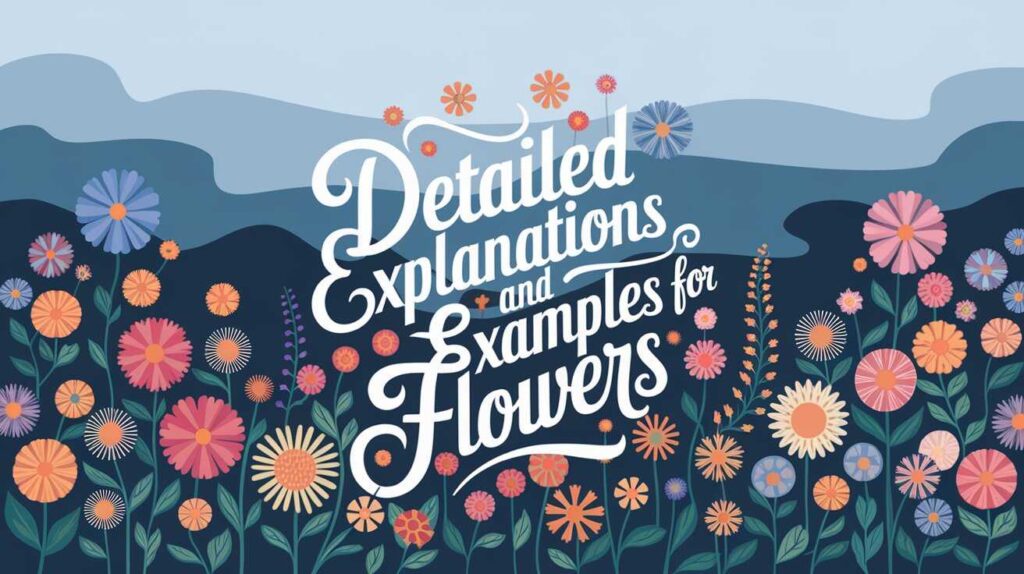
This section explores five collective nouns for flowers with simple examples, showing how each term is used in real-life contexts, like a bouquet of roses or a bed of tulips. These phrases enrich descriptions of both decorative and natural floral arrangements.
Bouquet
A bouquet refers to a carefully arranged group of flowers, usually tied together with ribbon or string. This term is commonly associated with celebrations, such as weddings or birthdays. A bouquet of roses, for example, symbolizes love and romance. Bouquets are often displayed in vases or handed as gifts during special occasions, making them one of the most recognized forms of floral arrangements.
Bunch
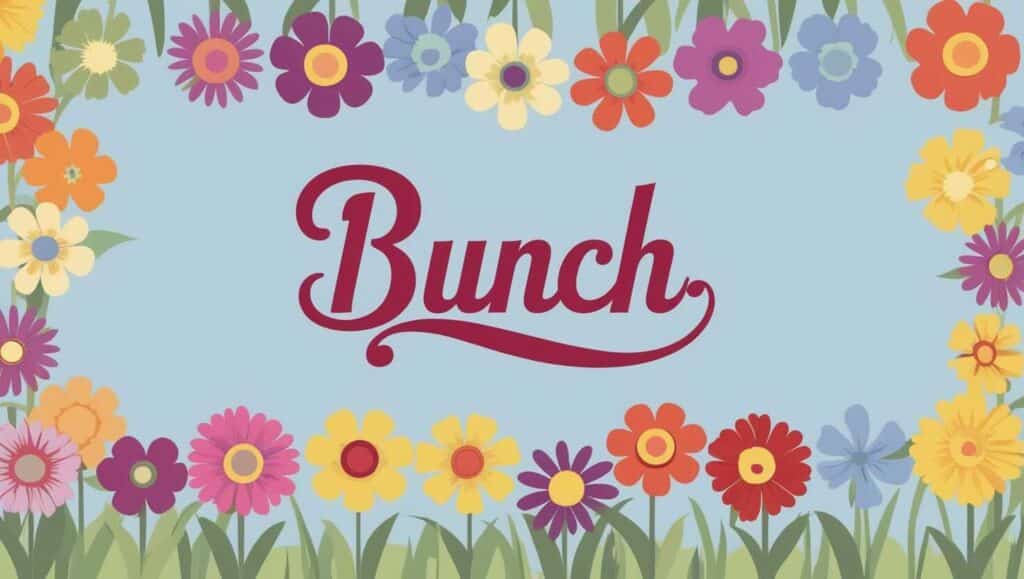
A bunch of flowers is a less formal way to describe a group of blooms tied together. You might encounter a bunch of daffodils in a local market or gather wildflowers into a bunch during a walk. Unlike bouquets, bunches are more casual and can include flowers of the same type or mixed varieties. They offer a relaxed, natural look, often used for spontaneous gifts or home decoration.
Garland
A garland is a string of flowers woven together, typically used for decorative purposes. Garlands of lilies are common in ceremonies, particularly in weddings or religious events. In some cultures, garlands represent blessings and good fortune. You can use this type of floral arrangement to decorate homes, altars, or doorways, not just for celebrations.
Spray

A spray of flowers is a small branch with multiple blooms. These sprays are often used in wreaths, casket displays, or other formal floral setups. A spray of roses or lilies can add elegance to any arrangement, especially for memorials or formal events. Sprays tend to be smaller than bouquets but still convey beauty and meaning.
Bed
A bed of flowers refers to a carefully planted area in a garden, where flowers grow in groups. For example, a bed of tulips adds vibrant color to parks during springtime. This term is used mainly for gardening, emphasizing the idea of multiple flowers planted closely together. Whether it’s a tulip field or a floral bed, these setups create stunning, colorful displays in natural settings.
A Group of Flowers
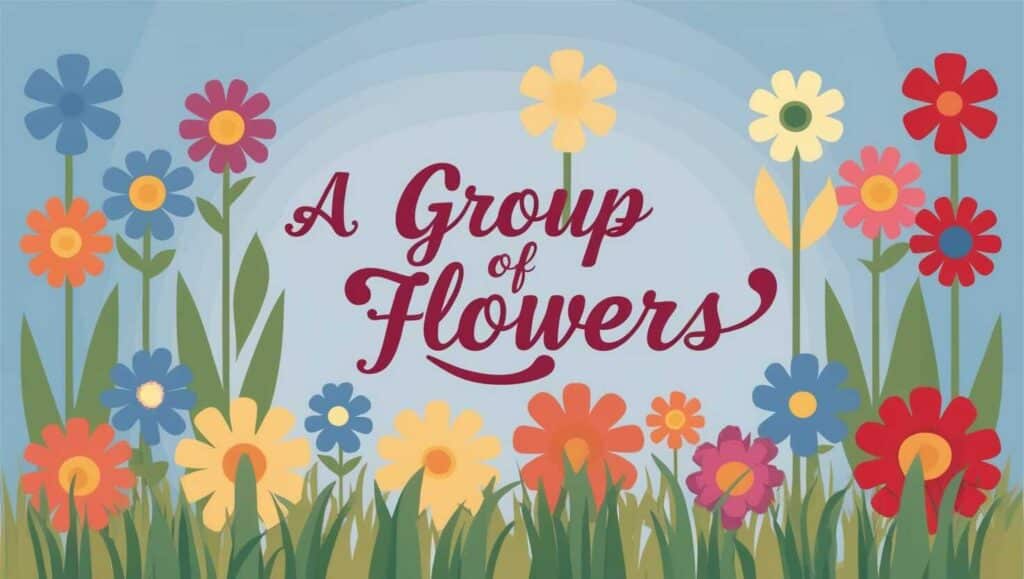
A group of flowers can be described using various collective nouns depending on their context. A floral grouping in a vase might be called an arrangement of lilies, while a natural collection could be described as a wildflower patch. In gardens, you’ll see terms like bed of flowers or flower garden. These phrases highlight the beauty and purpose of different flower groupings, whether for decoration or natural growth.
For informal settings, you might use terms like bunch of flowers or cluster of blooms. On the other hand, a flower field or garden of wildflowers reflects nature’s beauty without human intervention. Each collective noun offers a unique way to describe the colorful nature of flowers.
Group of Flowers is Called
Different situations require different grouping words. In a home setting, a flower arrangement might be displayed on a table, while in nature, we talk about beds of flowers or floral fields. A bunch of roses is a perfect gift, while a garland of wildflowers can adorn a doorway. Knowing these terms helps us describe the vibrant realm of flowers more precisely.
Each collective phrase offers an insight into the purpose and arrangement of the flowers. A posy is a small bouquet, often carried by bridesmaids, while a cluster of blooms might refer to a compact floral display. Using these terms enhances your language skills and helps you communicate clearly about the colorful world of flowers around you.
Frequently Asked Questions
What is a group of flowers called?
You can call a group of flowers a “bouquet”, “bunch”, “cluster”, or “bed”, depending on how you arrange or present them.
What is a collection of flowers called?
A collection of flowers often takes the form of a “floral arrangement” or a “garden”, showcasing multiple types or varieties together.
What is the collective noun for a bed of flowers?
The collective noun for a bed of flowers is simply a bed, which refers to an area where flowers are planted closely together.
What are the 10 examples of collective nouns?
Here are ten examples of collective nouns for flowers:
- Bouquet
- Bunch
- Garland
- Spray
- Cluster
- Posy
- Bed
- Field
- Patch
- Arrangement
These terms help describe different groupings and arrangements of flowers in various contexts.
Conclusion
Understanding flower collective nouns allows us to describe floral displays with precision and beauty. From a bouquet of roses to a bed of tulips, each collective noun reflects the nature and arrangement of the flowers. Whether it’s a bunch of flowers or a garland, these terms enrich our language and enhance our descriptions of the blooming scenery.
Next time you encounter a flower setup, remember the right collective phrase to use. It could be a lily display at an event or a wildflower patch along a hiking trail. Knowing these terms not only improves your vocabulary enhancement but also adds elegance to your speech and writing. So, explore the floral colors around you, and describe them with the precision and beauty they deserve.

Ava Rose, the creator of PhrasesPulse, is an expert in English grammar with years of experience. She is dedicated to simplifying complex grammar rules and exploring the richness of English phrases. Through her insightful posts, Ava aims to help learners of all levels enhance their understanding of the language and communicate more effectively. Her passion is making grammar approachable and enjoyable for everyone.

